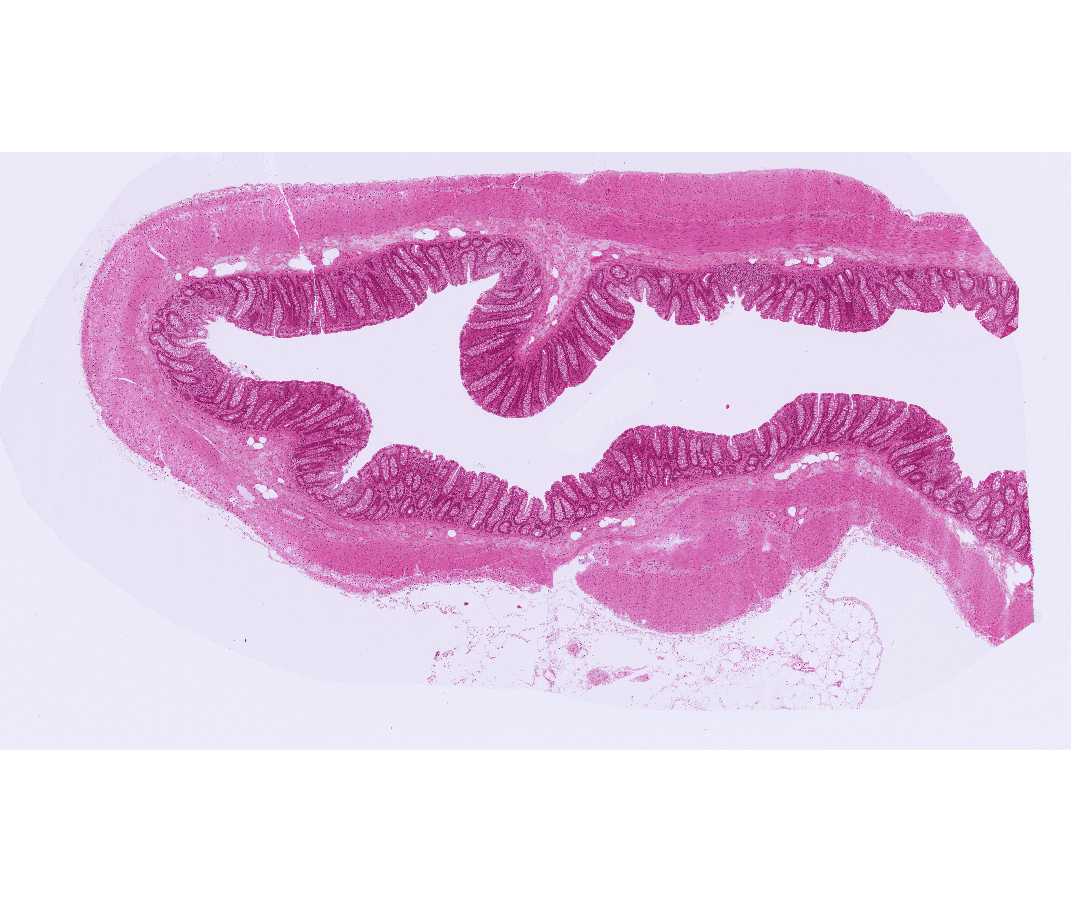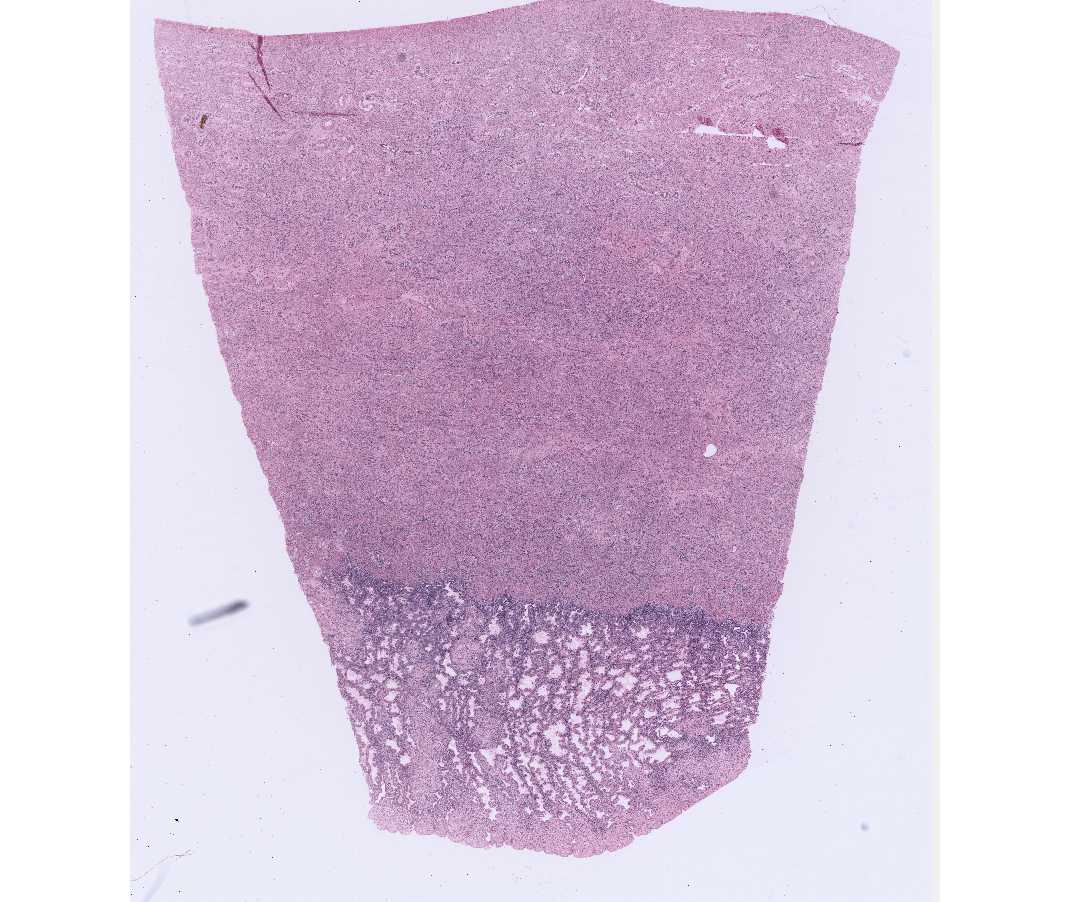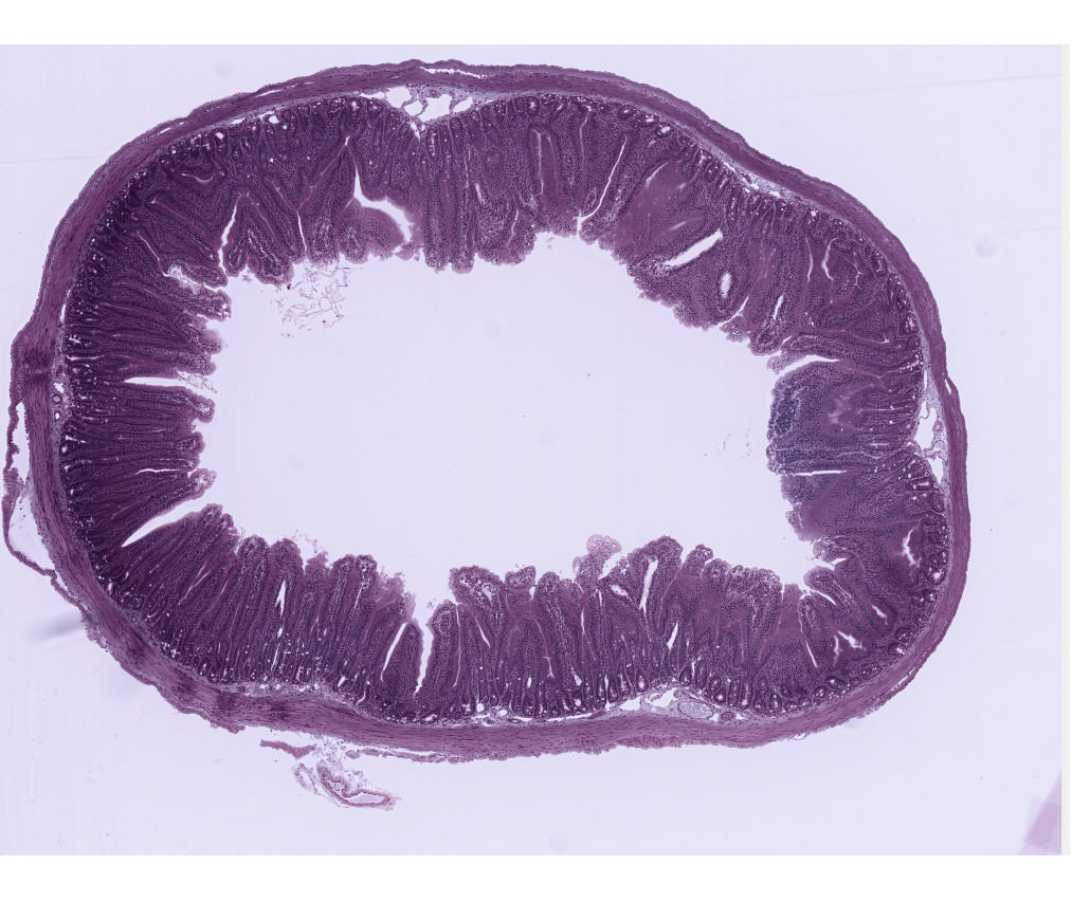SBPMD Histology Laboratory Manual
Muscle: Smooth Muscle
Smooth muscle is widely distributed in the body. It is found in the walls of ducts and blood and lymphatic vessels, as well as in the walls of the digestive, respiratory and urogenital tracts. It also occurs in the spleen (capsule and trabeculae), eye (iris and ciliary body), skin (arrector pili muscles of hairs), endocardium, scrotum, penis, perineum, nipple, etc. Smooth muscle fibers may be seen in the slides listed below. Always correlate the function of smooth muscle with the different organs and regions in which it is found.
#39 Colon, H&E
Open with WebViewer
With the naked eye, one can easily distinguish the region of the epithelium from that of the smooth muscle. Examine with the scanning objective the outermost part of the pink acidophilic region and identify two layers of smooth muscle: an inner layer consisting of fibers which have been sectioned obliquely or longitudinally, and an outer layer of fibers cut in cross section. Under higher magnification, study the appearance of the smooth muscle fibers in both cross and longitudinal sections.
Note: that in longitudinal section: (1) the boundaries of individual fibers are indistinct; (2) adjacent fibers are grouped into sheets (or bundles) and within each sheet tend to overlap in a staggered fashion; (3) the nucleus is elongate (ovoid to cigar-shape) and lies midway of the fiber length; and (4) the cytoplasm is homogeneous and strongly acidophilic. Note also that in cross section: (1) the fibers appear as circular or polygonal disks and (2) the nucleus is centrally located and is included only in some of the larger disks. Try to find the thin layer of smooth muscle under the basophilic region (mucosa). This muscle is called the muscularis mucosae. Make sure you can distinguish between smooth muscle and dense fibrous irregularly arranged connective tissue that lies between the 2 outer layers of muscle and the muscularis mucosae.
#66 Uterus Human progravid H&E
Open with WebViewer
Examine this slide with the naked eye to identify the broad expanse of smooth muscle (the myometrium) (pink stain). Under the microscope note that fascicles of smooth muscle are arranged in various planes. There are numerous blood vessels within the myometrium. The larger muscular arteries when cut in cross section appear as swirls of smooth muscle. NOTE: Smooth muscle can be confused easily with ordinary connective tissue. To differentiate between these two types of tissue, morphological characteristics and tinctorial (staining) reactions may be employed: (1) in H&E, connective tissue fibers stain with eosin (reddish-pink) while smooth muscle fibers commonly slightly with hematoxylin (due to the presence of ribosomes) as well as eosin and so are purplish-pink; (2) nuclei lie inside the smooth muscle fibers, but those of fibroblasts are between connective tissue fibers; (3) in longitudinal section, smooth muscle nuclei are often wrinkled; (4) no other types of cells occur between smooth muscle fibers within a bundle or sheet; and (5) some stains differentiate smooth muscle from connective tissue sharply (for instance, the Mallory stain colors collagenous fibers a blue and smooth muscle fibers a pink).
Optional: #102 Guinea pig small intestine (Bodian/silver)
Open with WebViewer
Find the two layers of smooth muscle. The basal lamina surrounding the muscle cells is stained with silver. Note that in the outer layer the muscle cells are cut in cross section. Close examination of the silver-stained basal lamina reveals there are interruptions (i.e., the basal lamina is a dotted line). What is responsible for these discontinuities?